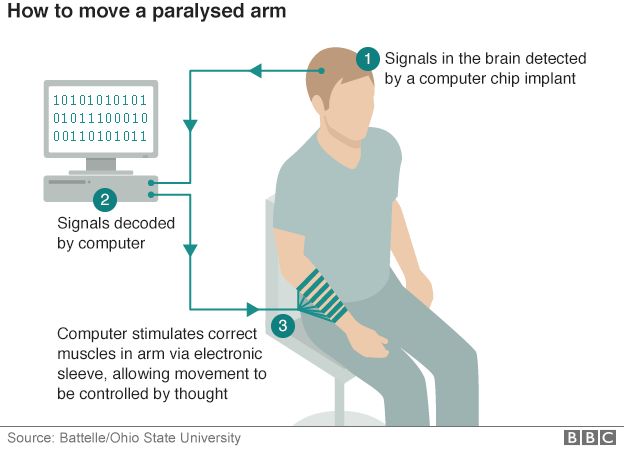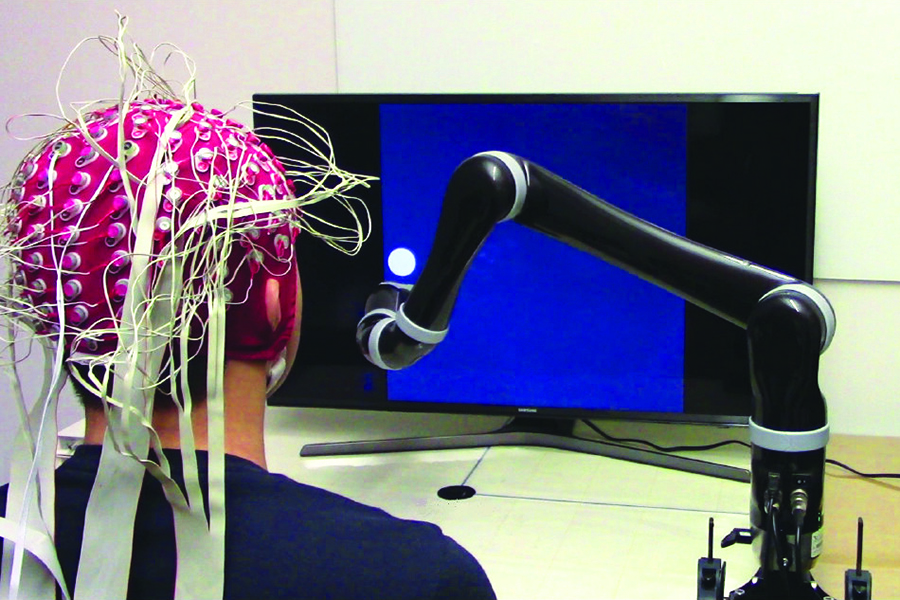Startup Spotlight: A Technology Pivot to Design a Stability Orthosis
While still in studying mechanical engineering at the TU Delft, IJsbrand de Lange first recalls seeing an awareness video of Michael J Fox, a well-known advocate for Parkinson’s Disease. IJsbrand noticed the struggles that these patients had due to their shaking hands. He was not per se intrigued by the illness itself, but more by the mechanism of the shaking. He saw it as a mechanical defect, rather than a physiological symptom. As a mechanical engineer, it was this technical fascination that inspired him to start finding a solution.
Most commonly associated with Parkinson’s disease or essential tremor, these shakes or tremors are a huge clinical problem with unmet needs. Millions of people worldwide struggle with these tremors on a daily basis, leading to problems with eating, drinking and writing. Today’s treatments such as medication or brain surgery come with their own inherent risks and don’t necessarily fit every patient’s needs.
STIL, a startup based in The Netherlands, is on a mission to help patients regain a stable life with their orthosis that helps suppress tremors. “We estimate around 30 million [patients] are in need for a new tremor treatment. Most of them are just looking for an accessible solution that works. And that’s exactly what we’re offering,” explains IJsbrand, the CEO and founder of STIL.
The STIL anti-tremor Orthosis
STIL has created an anti-tremor device. In the simplest terms, the device connects the hand to the upper arm to redirect the ‘shaking forces’ to a stable point. Several joints are added to the orthosis, which mimic the joints of the forearm. In these joints, specialized dampers are integrated that give more resistant to fast, high frequency movements like tremors, but allow slow movements so the patient can still make voluntary movements.

CEO and founder of STIL, IJsbrand de Lange, wears the anti-tremor orthosis. Image courtesy of STIL.
The device is designed to be very accessible and user friendly. Beyond a first-time adjustment, the patient can quickly don the lightweight device and immediately see the benefits. There is no software or electronics involved in the orthosis – it is a purely mechanical device.
The Pitfalls of High-Tech
However, the orthosis wasn’t always the mechanical device as it is today. IJsbrand’s initial concept was to use the principle of noise-cancelling to counteract the shakes. Challenging, but during his Masters thesis proven to be technically feasible.
The team created a model which took in the vibration of the hands and then transformed it into a mechanism that would counteract it. The models were designed with Simulink tools linked to Speedgoat hardware to create a control system for real time vibration suppression.

The first-generation orthosis being tested by a healthy subject. Tremors were simulated by using electrical muscle stimulation. The task was to draw a straight line in baseline condition (black, no stimulation), tremor simulation condition (red, only muscle stimulation) and tremor suppression condition (green, muscle stimulation + active tremor suppression). Image courtesy of STIL.
The team successfully demonstrated their noise-cancelling concept, creating a functional device that effectively suppressed tremors in both simulated tremors on healthy subjects and actual patients. However, patient feedback during trials included that the device was very bulky, heavy and unpractical since it required a battery pack that needed regular recharging. Additionally, the device’s expensive components made it financially inaccessible for many patients.
IJsbrand had to take a step back and remember the ultimate goal. “Ultimately, our focus shouldn’t solely be on achieving maximum amplitude reduction, but rather on restoring the ability to perform daily tasks without difficulty. With the first-generation device, we moved past the purpose of making an accessible, easy solution in the road of pursuing something technically challenging.”
A Pivotal Moment
In 2021, the team decided to change course. IJsbrand recalls, “it hurt a little, but it was the right decision. When I look back at the first-generation, it was beautiful, a piece of electromechanical art, but it just wasn’t what the patient wanted.”
This was a pivotal moment for STIL. Understanding that as a company, whether a startup or a well-established corporation, the end user’s feedback is integral. Essentially beginning from scratch, but with the gained knowledge, the team set out to design a simple, effective device that fit the needs of their clients.

The design on the new anti-tremor orthosis. Image courtesy of STIL.
In slightly over two years, they were able to complete the design, perform the necessary clinical trials and obtain regulatory compliance to launch the product to the market. A much quicker turn around than the previous iteration which took a full 3 years just to bring to a working prototype.
Partnerships Along the Journey
Being a startup has its natural challenges – limited budgets, limited resources, limited time. STIL had some additional support along their journey to market as a member of the YES!Delft accelerator program. As a partner of MathWorks Accelerator Program, member startups gain access to free software and engineering support to help offset some of the common challenges.
“Though we were convinced we were on the right track; the proof of the pudding is in the eating. We were developing something very complicated involving software, hardware and electronics. A million things can go wrong at the same time, which makes troubleshooting a nightmare. It turned out to be crucial that we had the right tools to quickly verify – or in our case falsify – the working principle. Without Simulink, we would have probably spent many more months pursuing the wrong track, that could have led to a detrimental situation for our company.” says IJsbrand. He explains how MATLAB and Simulink were a vital tool for their early development. “This program really helped us in initial phase of our startup and is the reason why we’re still using MATLAB today.”
Helping Millions of Patients
STIL recently launched the STIL Orthosis to the Dutch market. With over 2000 people on the waiting list here alone, it emphasizes the problem, but also the need for this solution.
The team is now preparing to scale-up and expand their availability globally. IJsbrand finishes with, “our mission is simply to help millions of patients, so they can finally, comfortably drink a cup of tea again without spilling or being embarrassed.”
Learn about the STIL Orthosis: https://www.youtube.com/watch?v=VJ7mcC7jpSM
- Category:
- Startup Spotlights
 Cleve’s Corner: Cleve Moler on Mathematics and Computing
Cleve’s Corner: Cleve Moler on Mathematics and Computing The MATLAB Blog
The MATLAB Blog Guy on Simulink
Guy on Simulink MATLAB Community
MATLAB Community Artificial Intelligence
Artificial Intelligence Developer Zone
Developer Zone Stuart’s MATLAB Videos
Stuart’s MATLAB Videos Behind the Headlines
Behind the Headlines File Exchange Pick of the Week
File Exchange Pick of the Week Hans on IoT
Hans on IoT Student Lounge
Student Lounge MATLAB ユーザーコミュニティー
MATLAB ユーザーコミュニティー Startups, Accelerators, & Entrepreneurs
Startups, Accelerators, & Entrepreneurs Autonomous Systems
Autonomous Systems Quantitative Finance
Quantitative Finance MATLAB Graphics and App Building
MATLAB Graphics and App Building






Comments
To leave a comment, please click here to sign in to your MathWorks Account or create a new one.